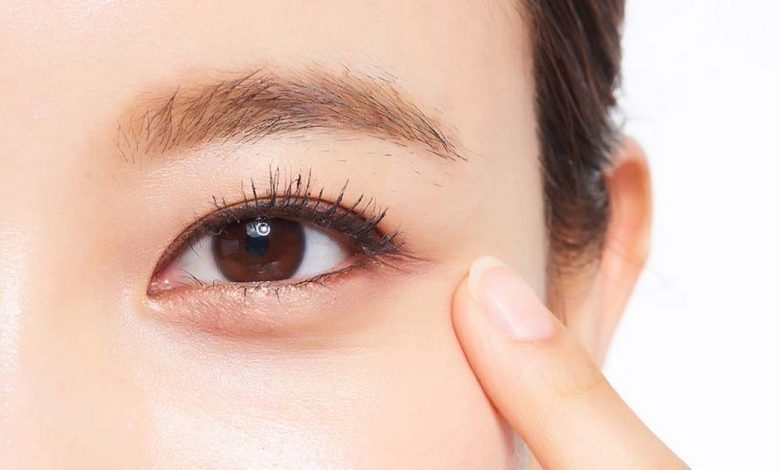epicanthal folds (skin folds in the corner of the eye): What's it, causes, symptoms, diagnostics, treatment, prevention

Epicanthal folds; Palpebronasal fold
What are epicanthal folds?
Epicanthal folds are small folds of skin, that occur near the medial (internal) corner of the upper eyelid. They are common among East Asians., but may also be present among people from other ethnic groups. Although they are usually mere aesthetic features, epicanthal folds can sometimes be associated with more serious conditions.
Causes of epicanthal folds
Epicanthal folds are often found as a natural variation in East Asians.. It is believed, that they are defensive adaptations, associated with cold conditions, in which keeping the eyes moist and warm was essential to survival.
However, in some cases, epicanthal folds may be a sign of an underlying disease.. In these cases, the folds are usually symmetrical and result from abnormal development of the medial canthus..
Epicanthal folds can also be seen in young children of any race before, as the bridge of the nose begins to rise.
However, they can also be caused by certain medical conditions., including:
- Down syndrome
- fetal alcohol syndrome
- Syndrome Ternera
- Phenylketonuria
- Williams syndrome
- Noonan syndrome
- Rubinstein-Taibi Syndrome
- Blepharophimosis syndrome
Symptoms of epicanthal folds
In most cases, epicanthal folds are simply an aesthetic sign and are not accompanied by any other symptoms.. In more serious cases, they may be related to the underlying disease and accompanied by other symptoms., such as facial asymmetry, short palpebral fissures (eyelid holes), ptosis (drooping eyelids), kosoglazie (kosoglazie) and/or flat nose. bridge.
When to see a doctor
If you or your child has epicanthal folds, important to watch for other symptoms, which may indicate an underlying disease. Consult your doctor, if you notice any changes in appearance, additional facial asymmetry or neurological symptoms, such as speech difficulties or developmental delay.
Questions, that your doctor may ask
When you meet with your doctor, he can ask different questions, to get a comprehensive picture of your health and better evaluate any underlying medical conditions. Questions about epicanthal folds may include:
- Epicanthal folds appear suddenly or develop gradually over time?
- Are they symmetrical or asymmetrical?
- Are they present in both eyes?
- Have you noticed any changes in your development or the development of your child?
- Have your eyelids drooped lately?
- Has the size of the eyelid opening changed??
Diagnosis of epicanthal folds
Your doctor will first perform a physical exam and check for any other symptoms, which may indicate a disease, in addition to epicanthal folds. If they suspect an underlying disease, they may order additional tests to determine the diagnosis. These may include genetic tests, imaging studies, such as computed tomography or magnetic resonance imaging, and/or neuropsychological testing.
Non-Asian child, born with epicanthal folds, may be tested for additional signs of Down syndrome or other genetic disorders.
Treatment of epicanthal folds
If epicanthal folds are just aesthetic, usually no treatment is needed. However, if an underlying disease is present, medical treatment may be required.. Treatment for the underlying condition may include medication, physiotherapy, surgery and/or other treatments, recommended by the doctor.
Home treatment for epicanthal folds
If epicanthal folds are just an aesthetic feature, there are home procedures, which can help improve the appearance. These include the use of topical creams, such as vitamins A and E, to moisturize the skin and stimulate collagen production, as well as non-surgical cosmetic procedures, such as dermal fillers.
Prevention of epicanthal folds
Epicanthal folds cannot be prevented depending on individual genes. Nonetheless, some lifestyle changes can help reduce their appearance and keep the skin around your eyes looking healthy. These include avoiding sun exposure, using sunscreen outdoors, a healthy balanced diet and maintaining a healthy weight.
Note. Always consult your doctor, before starting treatment for epicanthal folds at home.
Used sources and literature
Madan-Khetarpal S, Arnold G. Genetic disorders and dysmorphic conditions. In: Kids BJ, McIntire SC, Nowalk AJ, eds. Zitelli and Davis’ Atlas of Pediatric Physical Diagnosis. 7th ed. Philadelphia, PA: Elsevier; 2018:chap 1.
Olitsky SE, Marsh JD. Abnormalities of the lids. In: Kliegman RM, St. Geme JW, Bloom NJ, Shah SS, Tasker RC, Wilson KM, eds. Nelson Textbook of Pediatrics. 21st ed. Philadelphia, PA: Elsevier; 2020:chap 642.
Örge FH. Examination and common problems of the neonatal eye. In: Martin RJ, Fanaroff AA, Walsh MC, eds. Fanaroff and Martin’s Neonatal-Perinatal Medicine. 11th ed. Philadelphia, PA: Elsevier; 2020:chap 95.
